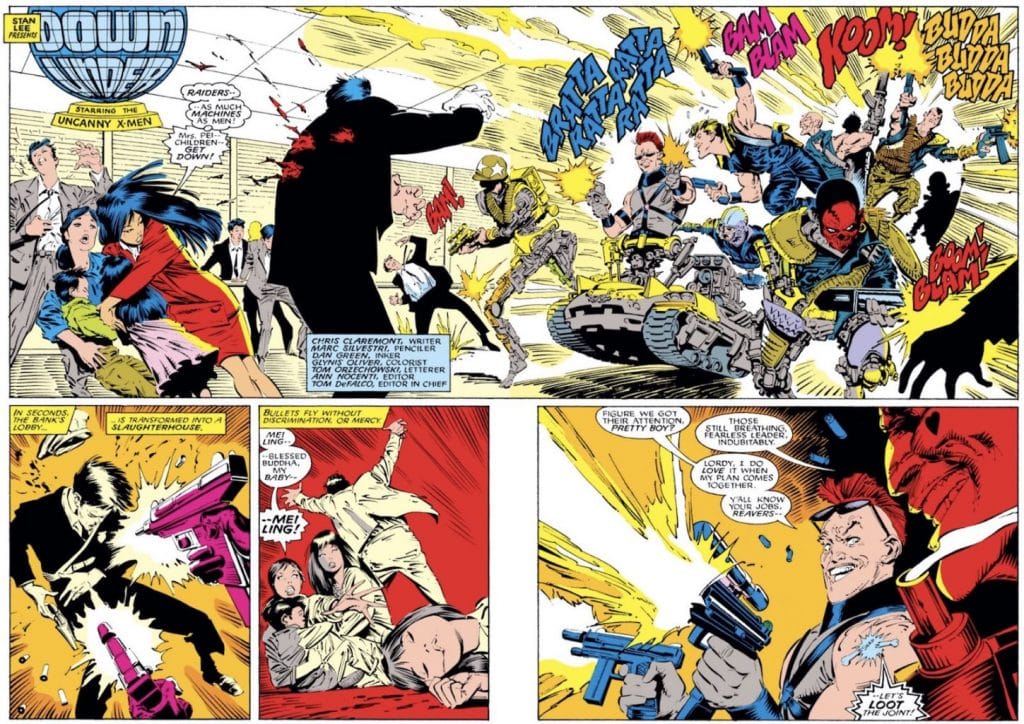In 1839 Edgar Allen Poe published a short story entitled The Man That Was Used Up.
As the story goes, an unnamed narrator meets General John A.B.C. Smith, an impressive physical specimen who is called “one of the most remarkable men of the age.” Smith is known for his great speaking ability and is six feet tall with broad shoulders, as well as a host of other essentially perfect attributes.
The narrator wants to learn more about this heroic man, but he finds that people don’t seem to want to speak about the General when asked, and instead only speak to the achievements of the “inventive age.” Passing his perception check, the narrator is certain that there is some secrety mystery he must unravel.

When the narrator arrived at the General’s home, he saw nothing but a pile of strange items on the floor. But like a Gibbering Mouther, the pile begins to speak in the voice of the General. Piece by piece his servants begin to assemble him – a leg screwed on, a glass eye plopped in, a tongue placed into his mouth, a wig atop his head.
The General had been captured and severely mutilated by Native American warriors. He hadn’t only lost the battle, he had literally lost pieces of himself, pieces that became artificial prostheses that must be put on every morning in order for the General to appear perfect and ideal in public.
The narrator now understood the General’s secret shame.
The world of science fiction certainly got a wealth of value from the measly twelve and a half cents that Poe’s original story cost. With The Man That Was Used Up, Edgar Allen Poe set up two science fiction tropes that largely persist to this day:
- Cybernetics can bring forth the human ideal.
- Cybernetics are shameful and meant to be hidden.
In other words, cybernetics in popular culture are often portrayed as simultaneously grotesque and desirable.
Among 1000s of other examples of cybernetics in popular culture has been the villainous Dr. No in the Bond films, the gifted engineer Geordi LaForge of Star Trek fame, the cartoonish Mr. Gadget, the ultra violent RoboCop, the playboy billionaire Tony Stark, the iconic Darth Vader, and the undeniably alluring Six from Battlestar Galactica. Many of these cyborgs have played straight to tropes, while others subverted or reimagined them.
But for the rest of this article, I want to talk about cyborgs in relation to my favorite pop culture topic: The X-Men.
Cyborgs and Cybernetics: The Reavers
The Reavers are old school X-Men foes that are as much machine as man. Each Reaver has their own cybernetic enhancement, most of which give them an overall grotesque appearance, the type that can best be expressed in a medium like comic books. One Reaver might have a cybernetic lower torso that looks like a tank, while another might have something akin to go-go gadget arms. (More about the Reavers here.)

But here are three things that make the Reavers such interesting examples of cybernetics in popular culture:
They are clearly a product of pop culture, and fit very well within its cybernetics tradition. In a clear nod to the A-Team that was very popular at that time, the Reaver “Pretty Boy” is a knock-off of the A-Team character Face. Pretty Boy even paraphrases Hannibal, another member of the A-Team.
Pop culture connections like this helped the Reavers to have a “subtle familiarity” while also being wholly unique and twisted toward evil. A paramilitary gang of mercenaries bent on self-interest makes for an interesting tropes and one in which cybernetics fit perfectly.
Secondly, they harken back to the tropes expressed by Edgar Allen Poe. The Reavers have some suped-up s&!† going on, making them the pinnacle of human power, yet they are simultaneously very grotesque as a result.
The Reavers are a force to be revoked with and their cybernetic enhancements allow them to dominate and subdue pretty much anything or anyone. The Reavers were human power at its pinnacle, set in contrast with the mutant X-Men who seemed to always be feared by humans that feared the mutants’ power.
But just like humans fear power they don’t understand, they also fear things that don’t look the way that is expected, so the Reavers come across as very off-putting in their appearance. Peak human, while still not appearing quite human. Edgar Allen Poe would have been proud of Chris Claremont’s X-Men stories.
Thirdly, the Reavers extort their power over others, bringing out the real human fears about cybernetics. Much like Olympic doping, cybernetics is mostly seen as unfair by other humans who don’t like to see an uncompetitive advantage expressed by a small few who they see as “souped up.”
The Reavers manipulate this subconscious fear as they use their cybernetics to rob banks, subdue women, and general partake in nastiness in their own self-interest. This is the cybernetic future that us gen-pop humans fear: a world taken over by crazies with chips implanted in their brains. Well, that’s the fear my grandma expresses anyway.
Cyborgs and Cybernetics in Popular Culture, From Edgar Allen Poe to the X-men
Why have cybernetics been written about by Poe and drawn in comic books? Do we secretly fear we’ll lose our humanity, becoming one of “those.” Do we secretly lust for the power that could come through artificial enhancement of our bodies?
I don’t know. But I do know that cybernetics has a rich tradition in popular culture. Cyborgs with tricked out components are a part of so many of the nerdy stories, games, and movies we love. But I don’t think most of us have stopped to contemplate just why cybernetics sink their wires into our psyches so deeply.

